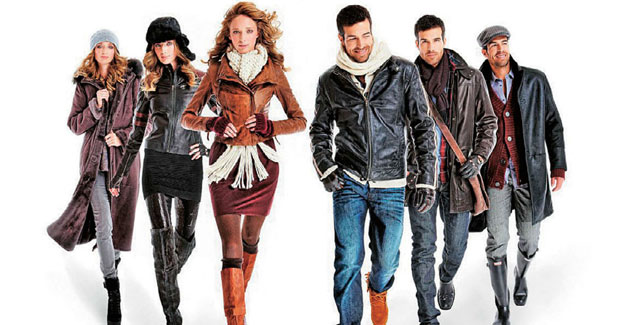
Fabrics & fashion: A timeline
We have come a long way from our grass and animal hide wearing ancestors to the jeans and thongs wearing youngsters of today. The driver for this change has been largely due to a socio-cultural phenomenon called ´fashion´. Even a thousand years ago, specific styles of attire differed from one culture to another.
The fashions of tomorrow are bound to be influenced by people´s attitudes to resource shortages, climate change and sustainability, aver LR Chandru and V Nithyapraksh.
We have come a long way from our grass and animal hide wearing ancestors to the jeans and thongs wearing youngsters of today. The driver for this change has been largely due to a socio-cultural phenomenon called ´fashion´. Even a thousand years ago, specific styles of attire differed from one culture to another. Within a given culture, changes took place over time, but those changes usually occurred very slowly, over hundreds of years. Draped costumes utilising lengths of woven textiles predominated in tropical and warm climates, where a loose fit maintained the microclimate required for comfort. The ubiquitous ´sari´ bears testimony to this. Sculptures from the Harappan era depict priests wearing draped garments. Women are seen wearing elaborate headgear and a scanty wrap around the hips, a form of dress used even today by some tribal in India. With a few exceptions, ancient world garments of the Mediterranean region were draped, the toga, used in ancient Rome is a typical example. In these civilizations, tradition not novelty was generally the norm.
Tailored costumes are thought to have originated around the time when animal skins were used as clothing. Animal skins being smaller in size than woven textiles, had to be sewn together. Moreover, tailored garments, cut to fit the body were ideal in cold climates where the closer fit kept the wearer warm. Draped garments slowly gave way to stitched garments in India after the fourth century, as seen from Gupta-era murals at Ajanta with entertainers and soldiers wearing sewn dresses and dancing ladies with backless blouses.
Cultural changes and exchanges, driven sometimes by wars and invasions were also responsible for changes in the way people dressed. The difference between ceremonial attire and attire for daily use became more pronounced and this difference still persists. The innate desire of human beings to be unique and distinct, reinforced by socio-economic stratification of society, differentiated the type and style of garments in that society. World over, the royal courts provided a stage for display of fashions, but over a period of time, social norms became less rigid, encouraging imitation between social classes. Increased trade and travel spread information about styles from one area to another, paving the way for assimilation of styles..
The earliest woven fabrics were most likely made from linen, flax, cotton and wool. The ancient Egyptians were highly skilled in linen production. Bengal cotton was known from very early times for its gossamer like muslin fabric which commanded very high prices. The story goes that when Caesar complained that his wife appeared almost naked in public, she countered him saying that she wore seven layers of Indian muslin. Silk was available only to the wealthy and this continued until the invention of the first man made fiber viscose rayon, also known as ´art silk´. Synthetic polymer based fibers like nylon, polyester and acrylic soon followed and they had the advantage that their visual and comfort properties could be designed for a particular end use. Colouring of textile material existed more than 3000 years back, with Indigo dye from India entering into Europe in the sixteenth century. The first synthetic organic dye ´aniline purple´ was produced in 1856 after which many new compounds and colours were developed in rapid succession for the textile industry. The introduction of the power loom and the sewing machine in the early 1800s, followed by the invention of synthetic fibers and dyes has transformed the textile landscape today. The ability to mass produce and mass merchandise accelerated the growth of the then nascent ready-to-wear industry, which today is the cornerstone of Fashi




